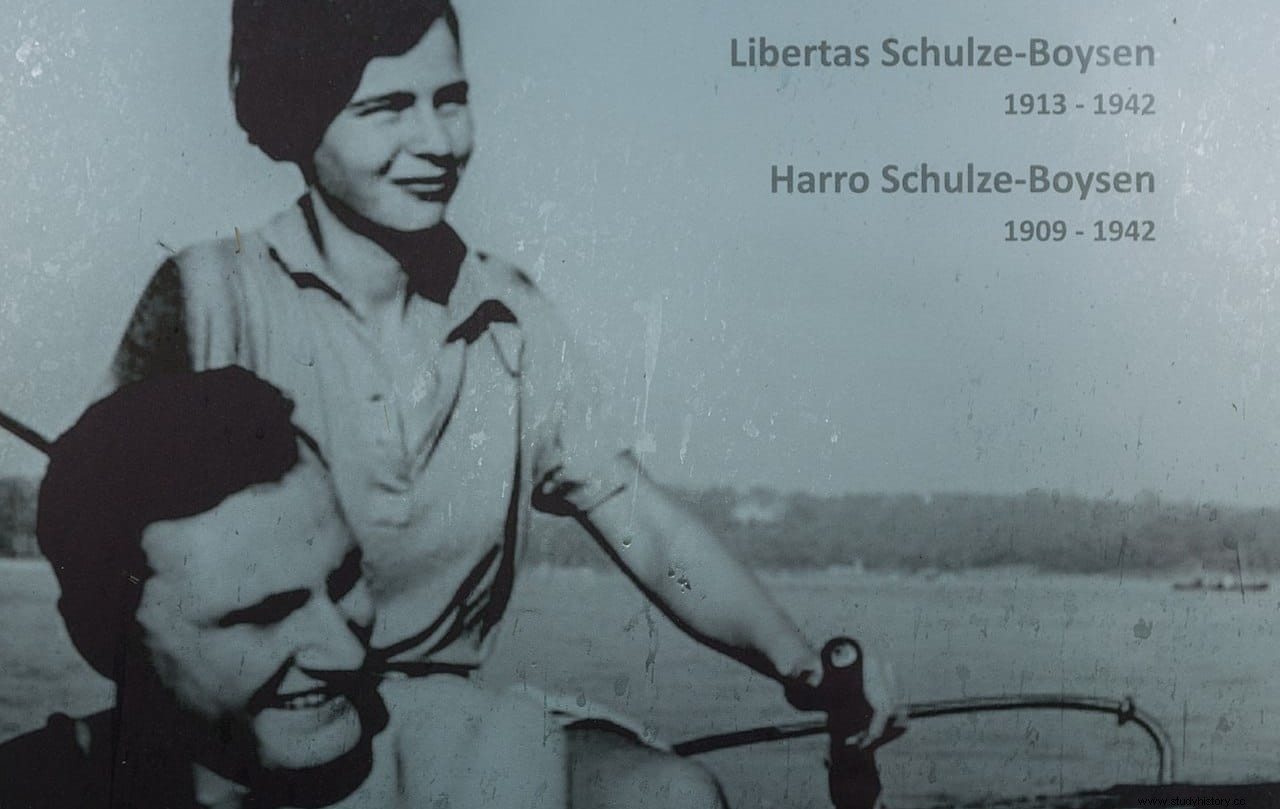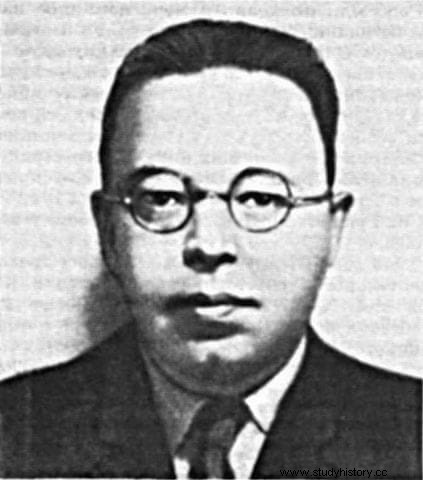On July 20, 1944, a young Wehrmacht officer, a blue-blooded Bavarian colonel named Klaus von Stauffenberg , secretly placed his briefcase next to Adolf Hitler during a meeting of commanders in the so-called Führerhauptquartier Wolfsschanze (Wolf's Lair), a bunker that the German dictator had in East Prussia.
The briefcase contained a time bomb whose explosion, however, did not kill the Führer; when Von Stauffenberg left the place, an assistant moved him from his place when he was in his way and the massive table that occupied the center of the room cushioned the shock wave. The author of the attack was part of a plot to put an end to Nazism, before the imminent defeat in the war, which responded to the name of Operation Valkyrie , behind which was a group of conspirators gathered under the name Schwarze Kapelle; that is, Black Orchestra .
That kind of secret society integrated several commands and officers fed up with the regime , with General Ludwig Beck at the head supported by Rear Admiral Wilhelm Franz Canaris, Friedrich Fromm and Marshal Erwin von Witzleben; the first had been chief of the General Staff, the second was in charge of the Abwehr (Intelligence service), the third had the reserve forces of Berlin under his command and the fourth, who had led the invasion of France, was retired for not being attached to the government and suspected of his participation in a previous conspiracy. With the failure of the attack, Black Orchestra was quickly dismantled by the Gestapo and most of its members executed. The Nazis did not want to mess around with games because two years earlier they had already had to face another orchestra of a different color.
Red, to be exact. The Rote Kapelle (Red Orchestra) was called that for obvious reasons, if we look at its origin. Unlike its black counterpart, it was not made up of illustrious members of the army of Prussian tradition nor did it emerge as a belated reaction to the military disaster in which the country was plunged, but was born as an espionage network organized by a Polish agent of the GRU (Soviet Intelligence service, antecedent of the KGB) officially called Leopold Trepper , although his real name is unknown. A Zionist militant from a very young age, he was part of the Fantoma spy ring. s, which the Soviets had in Paris in the early thirties. Later, Trepper created the Red Orchestra in Brussels and did not limit its sphere of action to Germany but also to other countries such as France, Holland and Switzerland.
Actually the term Red Orchestra , which alluded to their perfect coordination, was not invented by them but by the Gestapo , who soon detected them and coined the names of drivers and pianists (musicians in Soviet slang) to refer to the levels of their hierarchy, the former designating the supervisors and the latter the radio and telegraph operators who were in charge of transmitting the information obtained. The Germans of the RSHA (Reichssicherheitshauptamt, Central Security Office of the Reich) baptized with the surname of Trepper to the group that operated in France, Belgium and Germany, although in Berlin they identified one separately, the Schulze-Boysen/Harnack , while they put Red Trio to the Swiss (which included some British agent, such as the famous Alexander Foote).
Trepper arrived in Brussels in 1939 posing as a Canadian businessman and renting various premises from which to carry out espionage operations; he passed them off as the headquarters of his companies (one for the manufacture of raincoats, Foreign Excellent Raincoat Company, and another for the distribution of cognac and stoves, Simex), which were false but did introduce some products on the black market to finance themselves when the war broke out. In 1940, with the invasion of Belgium, he moved to Paris and, through seven networks, it began to provide information on troop movements, production of war material and transportation of raw materials; He obtained the data from conversations with the high command, taking advantage of his access to them and the prestige he had as a weighty industrialist. Apparently he warned Stalin of the start date of Operation Barbarossa (the invasion of the USSR), but the Soviet leader did not believe him, relying on the non-aggression pact he had signed with Hitler. Then he also revealed the German plans in Russia in general and Stalingrad in particular, contributing decisively to their defeat.

At the end of 1941 the Brussels network was discovered coincidentally by the Nazis, who dismantled it and arrested Trepper himself. They proposed to him to become a double agent and he apparently accepted, sending counterinformation to Moscow, although it is suspected that he had some cryptic method of warning the Soviets of the situation. In any case, in September 1943 he fled with the help of the French Resistance , which kept him hidden until the end of the war. In the meantime, the other networks continued to function.
The one in Berlin was commanded by Harro Schulze-Boysen , an officer of the General Staff of the Luftwaffe who was anti-Nazi since before the seizure of power by Hitler and who had joined the NSDAP (National Socialist German Workers' Party) to mislead. In that group, not only were communists but also a strange amalgamation of opponents which included old-fashioned conservatives who couldn't stand the regime, Jews and Catholics; Curiously, almost half were women, who had Harro's wife, Libertas, as a model. His main activity was promoting civil disobedience , hanging posters, handing out leaflets and helping the persecuted to escape; they also occasionally passed information to the US embassy. But after the fall of Trepper, the Gestapo was alert and in the summer of 1942 they arrested all the members of the Berlin group. The arrests amounted to half a thousand, of which fifty-eight - men and women - ended up executed .

During that time, Red Trio , the Swiss network, had managed to introduce spies in the OKH (Oberkommando des Heeres, High Command of the Army) who revealed to the allies the details of Operation Citadel (the last German offensive on the Eastern Front), allowing the Soviets to send their divisions to stop it in what led to the largest tank battle in history, that of Kursk; it was almost simultaneously with the dismantling of the Schulze-Boysen group. The advantage of the Swiss spies was that they were safe from the Gestapo, to the point that most of its members are still unknown today. There are some exceptions, yes:the leader was Rudolf Roessler , aka Lucy , and his right-hand man Alexander Radolfi, name adopted by the Hungarian communist Sandor Radó , known as Dora and that since 1936 it already had its own network (Roten Drei , it was called) before merging with Red Trio .
In 1945 Rado was called to the USSR and accused of passing information to London and Washington, for which he was sentenced to eight years in prison; he was rehabilitated after Stalin's death. In this he followed a path similar to that of Trepper, who at the end of the war was received with honors in Moscow... before being sent to the Lubyanka prison. for ten years for the double game the Nazis had forced him to. When he left he settled in Warsaw, where he lived for twenty years as president of the Jewish Cultural Association before going into exile, once again, in Jerusalem . In 1975 he published a memoir entitled The Great Game, in which he recounted his work during World War II and the creation of the Red Orchestra, which became the largest espionage network of the conflict, with half a thousand radio stations. Admiral Canaris said of him that «his actions cost more than thirty thousand dead to Germany».
